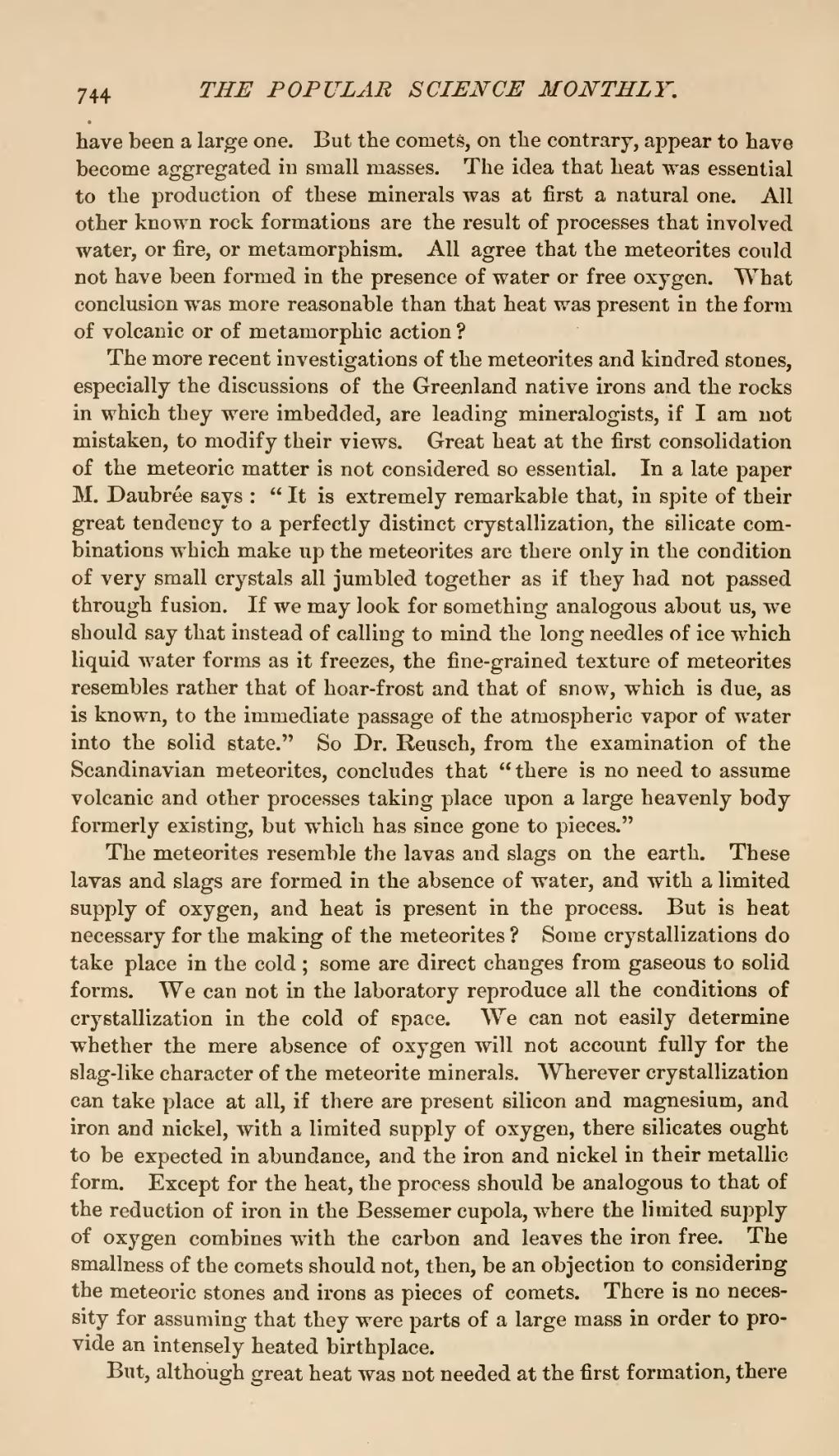have been a large one. But the comets, on the contrary, appear to have become aggregated in small masses. The idea that heat was essential to the production of these minerals was at first a natural one. All other known rock formations are the result of processes that involved water, or fire, or metamorphism. All agree that the meteorites could not have been formed in the presence of water or free oxygen. What conclusion was more reasonable than that heat was present in the form of volcanic or of metamorphic action?
The more recent investigations of the meteorites and kindred stones, especially the discussions of the Greenland native irons and the rocks in which they were imbedded, are leading mineralogists, if I am not mistaken, to modify their views. Great heat at the first consolidation of the meteoric matter is not considered so essential. In a late paper M. Daubrée says: "It is extremely remarkable that, in spite of their great tendency to a perfectly distinct crystallization, the silicate combinations which make up the meteorites are there only in the condition of very small crystals all jumbled together as if they had not passed through fusion. If we may look for something analogous about us, we should say that instead of calling to mind the long needles of ice which liquid water forms as it freezes, the fine-grained texture of meteorites resembles rather that of hoar-frost and that of snow, which is due, as is known, to the immediate passage of the atmospheric vapor of water into the solid state." So Dr. Reusch, from the examination of the Scandinavian meteorites, concludes that "there is no need to assume volcanic and other processes taking place upon a large heavenly body formerly existing, but which has since gone to pieces."
The meteorites resemble the lavas and slags on the earth. These lavas and slags are formed in the absence of water, and with a limited supply of oxygen, and heat is present in the process. But is heat necessary for the making of the meteorites? Some crystallizations do take place in the cold; some are direct changes from gaseous to solid forms. We can not in the laboratory reproduce all the conditions of crystallization in the cold of space. We can not easily determine whether the mere absence of oxygen will not account fully for the slag-like character of the meteorite minerals. Wherever crystallization can take place at all, if there are present silicon and magnesium, and iron and nickel, with a limited supply of oxygen, there silicates ought to be expected in abundance, and the iron and nickel in their metallic form. Except for the heat, the process should be analogous to that of the reduction of iron in the Bessemer cupola, where the limited supply of oxygen combines with the carbon and leaves the iron free. The smallness of the comets should not, then, be an objection to considering the meteoric stones and irons as pieces of comets. There is no necessity for assuming that they were parts of a large mass in order to provide an intensely heated birthplace.
But, although great heat was not needed at the first formation, there

